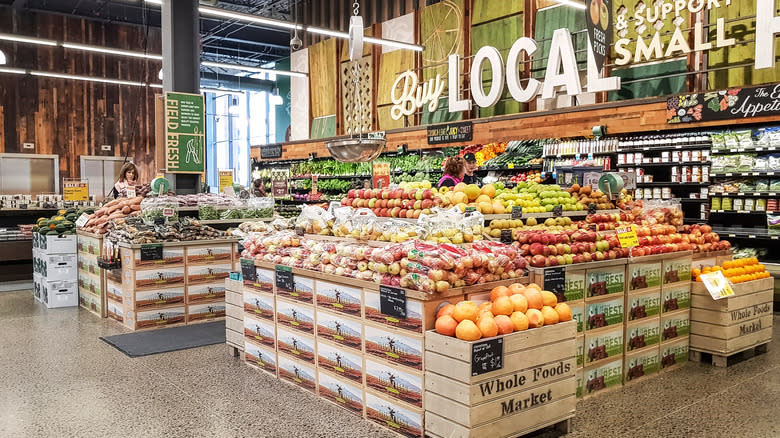
Whole Foods Market has long been known as a place to buy organic and high-quality products. Since the first Whole Foods (which almost failed) opened in 1978 under its old name, SaferWay Natural Foods, it’s been a place to shop for healthier options. But, there’s a chance Whole Foods won’t be around much longer. Now, we’re not saying that this supermarket chain is in imminent danger, but nothing lasts forever and there are potential signs pointing this way.
For instance, Whole Foods now has so much more competition in areas where it once had a monopoly, such as organic products, vegan goods, and veggie food. You can now get these kinds of items from any supermarket, so this is bound to have an impact. There’s also the fact that sales seem to be way stronger in some areas and markets than others, which isn’t necessarily a good sign for continued success.
We’re about to delve deeper into 11 reasons why Whole Foods might not be around much longer. It’s not that it’s a bad place to shop, but it has its flaws and areas that need improving. So, it might be time to stock up on your favorite products from the store, just in case you can’t get them everything considered.
Read more: The Most Delicious Aldi Finds Of All Time
There’s More Competition In The Organic And Specialty Goods Markets
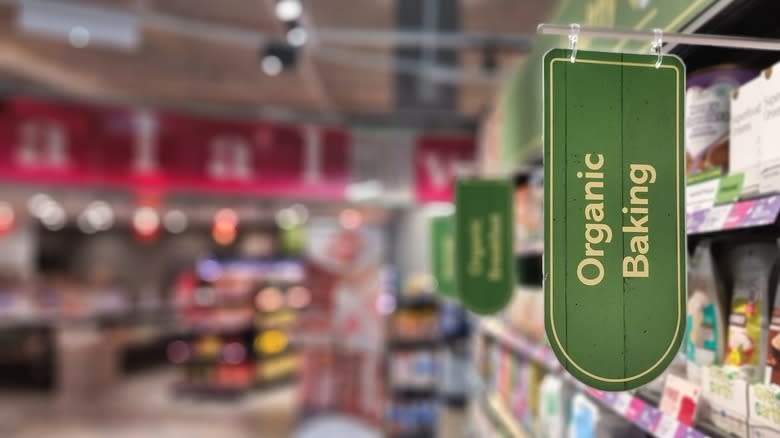

Whole Foods used to lead the organic and specialty food market, but now it has way more competition than it once did. The increasing rivalry among producers of organic food items and other unique products — such as vegan and gluten-free food — plays a big part in the grocer’s potential downfall. Ten or 20 years ago, you had little choice but to go to Whole Foods if you wanted to buy organic, but it isn’t so special anymore.
Major supermarket chains — like Kroger, Walmart, and Safeway — have expanded their organic and specialty product lines. These regular grocery stores sell similar products at a lower price, which make organic foods accessible to more people. These bigger supermarkets can undercut Whole Foods’ prices because of their large distribution networks. This attracts customers who want low-priced groceries.
Whole Foods’ territory is also being invaded by small niche retailers, like independent health food stores. Some specialize in local or artisanal products, which appeal to a certain category of buyers. For these people, Whole Foods has sold out. It’s not the cute little chain it once was, rather it’s a multinational corporation, and they’d rather spend their money elsewhere.
What’s more, online shopping has opened up another battleground. Online companies such as Amazon (ironically, the parent company of Whole Foods) offer organic and specialty goods, often much cheaper than Whole Foods does — and conveniently deliver to your front door.
Whole Foods Is Now Owned By Amazon … And Some People Don’t Like That
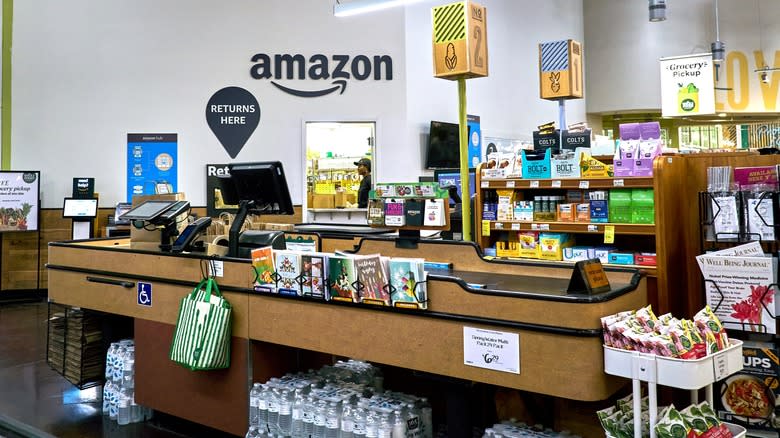

Whole Foods coasts on its wholesome reputation, so maybe you missed the fact that it was acquired by Amazon in 2017. While the takeover has come with some benefits, the store has also lost some of its original customers. Many loyal shoppers loved Whole Foods for its commitment to sustainability, local sourcing, and community involvement. Amazon brought a big corporation into the mix and the fear was that those values would get lost. Some customers felt the store’s community-centric charm was compromised by Amazon’s efficiency driven approach. The introduction of Amazon Prime benefits and the focus on tech has only intensified this impression, making the shopping experience feel more commercial and less personal.
The association with Amazon has also brought ethical and business practice concerns to the forefront. Amazon has been criticized for its labor practices, environmental impact, and market dominance. These are issues that are important to many long-time Whole Foods customers and so some will have boycotted and found alternatives that align more with their values.
This disaffection among its core customer base could be a big problem for Whole Foods. If the brand loses its most loyal shoppers without gaining enough new ones through Amazon’s broader reach, sales will decline and it may become irrelevant. In the end, integration with Amazon might be a double-edged sword, bringing short term gains but threatening the long term viability of the Whole Foods brand.
Whole Foods Has Struggled With Some Declining Sales, But The Picture Is Complicated
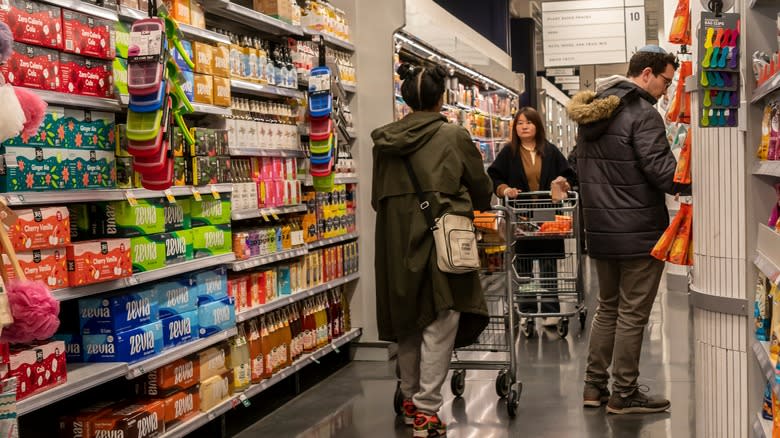

Whole Foods has faced a challenging landscape in recent years. The company suffered from years of declining sales, but has seen improvements more recently. Back in 2017, profits were low and things were looking bleak. Then Amazon took over and although things didn’t improve right away, they started to pick up. In the U.S., revenue from Whole Foods locations was $20 billion in 2023. This was up from $17.2 billion in 2019. But, in other locations, things aren’t the same. Sales are down in the U.K. and Whole Foods has closed two of its stores there. Things aren’t clear cut for the company and it could still be a bad sign.
Several factors contribute to this complex scenario. The takeover from Amazon meant it was easier for buyers to shop online and Prime customers were given additional discounts. Whole Foods has also worked to revamp its image and product offerings. The introduction of Whole Foods’ 365 line was aimed at budget-conscious buyers. But, on the flip side, some people are put off by the store’s new corporate owners.
It seems as though the path forward might still remain uncertain. Whole Foods must balance its original ethos with the operational demands of being part of Amazon. Whether these efforts can sustain long-term growth amidst ongoing competition remains to be seen.
The Store Is Falling Behind In Online Sales
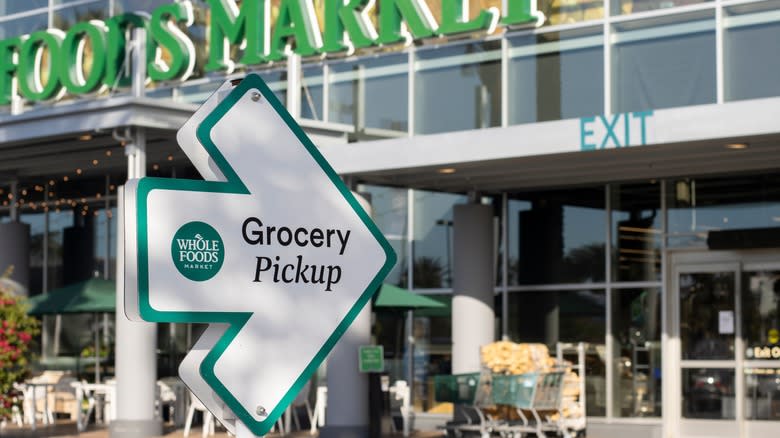

More and more people are buying groceries online. After all, why battle the crowds and waste time in checkout queues when you can have groceries delivered to your doorstep with the press of a few buttons or quickly pick them up from the store? But, Whole Foods isn’t doing particularly well in the area of online sales and this could be an issue.
When 2024 comes to an end, it’s estimated that Amazon will have an 18.5% share of the online grocery sales market, while leader Walmart will have 26.9%. And, although Amazon sells Whole Foods products online, these figures also include Amazon Fresh. There aren’t any separate online sales statistics for Whole Foods available, but it will make up only a portion of that 18.5%, with Amazon Fresh snagging the rest.
It’s likely that online shopping is the way of the future. Those stores that can corner the market will make far more money than those lagging behind. So, the fact that Whole Foods isn’t the greatest at online sales might be a sign of its future demise. It doesn’t seem as though things are drastic yet, but it’s not painting a rosy picture.
Whole Foods Doesn’t Have The Product Range Of Other Grocery Stores


Yes, you can get some great health-conscious products at Whole Foods. Where else can you pick up your favorite vegan cookies or soda that’s free from refined sugars? But, the truth of Whole Foods is that its product range can’t match that of other mainstream supermarkets. And, if people can’t find the products they want, they might be reluctant to shop there.
One of the reasons behind its smaller product range is its list of banned ingredients. You might not know this, but there are some ingredients that you’ll never find in products sold at Whole Foods. This includes aspartame and other artificial sweeteners, high-fructose corn syrup, artificial colorings, hydrogenated fats, and a long list of chemical contents. Sure, some of these might be overkill, but it’s the Whole Foods way.
It’s this list that means you won’t find many of your favorite snacks and processed foods at this specialty market. With the eliminated high-fructose corn syrup, most sodas are out of bounds. And, forget about any snack foods that contain colorings or hydrogenated fats. This is all very well for people who want minimally processed snacks, but many people want the choice. Thanks to these banned ingredients, Whole Foods just doesn’t have the same range of products as other supermarkets and this could ultimately make customers wary.
It’s Pricier Than Other Supermarkets


Whole Foods used to have the nickname Whole Paycheck due to its sky-high prices. It was easy to walk into the store, grab a couple of extras to top up your dinner, and come out $25 lighter. However, since it was taken over in 2017, it’s gone to extreme effort to lose that reputation. In recent years, you’ve been able to pick up an increasing number of bargains at the healthy supermarket chain, especially on everyday essentials. But, still, many people find it pricier than other supermarkets. What’s the deal?
Well, prices at Whole Foods have decreased, but they still don’t match other supermarkets. A 2019 study found that Whole Foods’ prices were 27% more expensive than those at Kroger. This was down from 40% previously, but that’s still not ideal. Of course, years have passed since then. More recently, in 2023, The Philadelphia Enquirer found that Whole Foods was the most expensive place to buy a basket of 18 essential items. It cost around $75, while the same items from Aldi cost $39. That’s a big difference.
So, you might pay less than you used to at Whole Foods but it’s still a pricey place to shop. With the cost of living crisis showing no sign of letting up, this might put people off shopping here. Many shoppers already think Trader Joe’s is better than Whole Foods — and its lower prices could tip the balance.
Many People Don’t Do Their Whole Shopping At Whole Foods


Wealthy Millennials are the average Whole Foods customers, according to data. But, even within its core demographic, many people don’t manage to do their whole shopping in the store. If you head to Target or Kroger, you’re probably expecting to be able to do your full weekly shop there, but a large percentage of customers at Whole Foods ultimately leave to finish shopping elsewhere.
This can be for a variety of reasons. For many people, it’s to save money. Customers will buy some of their groceries at Whole Foods — perhaps fancier ingredients that they can’t find elsewhere or items that they love and think it’s worth splashing out on. Others might do their spending in two places because there are some Whole Foods products they love but they can’t find all of the name brands that they like. But, whatever the reason, Whole Foods is losing out on money by having people complete their shopping elsewhere.
Still, for many this is a sensible solution. It’s worth making a list of the foods that are worth buying at Whole Foods and ones that are better left on the shelves. This way, you can spend your money on products that are worth it and save money by picking up the rest of your groceries elsewhere.
Whole Foods Staff Are Having Issues


Some people have noticed that it’s harder than it once was to find staff to help you out in Whole Foods. Rather than finding knowledgeable employees to point you in the direction of the best multivitamins or the tastiest vegan cheese, you’re more likely to find aisles empty of staff. This may be due to the fact that Whole Foods workers have had issues since the company was taken over by Amazon.
Whole Foods has laid off staff from select teams and Amazon’s grocery unit — of which Whole Foods is a part — has also let some of its employees go. Those who do remain have spoken out about a range of grievances since the takeover. This includes poor wage growth, job consolidation, and being asked to do more work for less pay. So, it’s no surprise if some staff aren’t necessarily enthused by their jobs. Nor is it a surprise that employees are being treated worse under Amazon’s oversight.
Whole Foods Is Closing Stores And Has Changed Its Regions
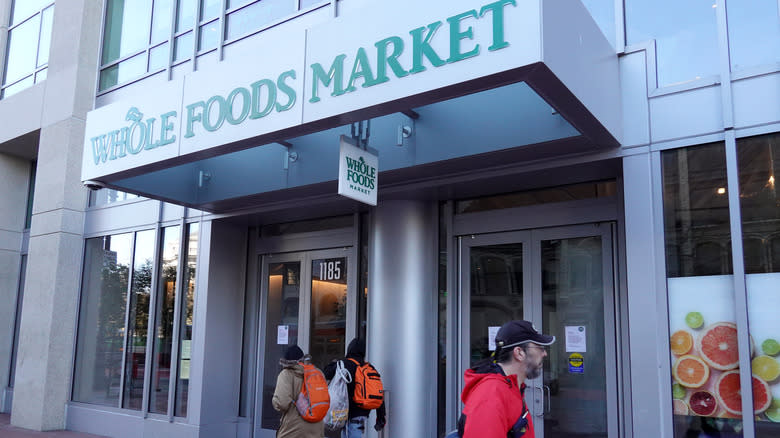

One of the big draws of Whole Foods is its local products. The U.S. used to be divided into nine regions, with each one selling some community items from its area. However as of 2023, it redrew its regional map to split it into six regions instead of nine — that’s a decrease of a third. Not only did this mean layoffs for some of its local staff, but fewer, larger regions means you’re less likely to find products that come from nearby. For instance, if you live in Arkansas, you might find “local” products from as far away as North Dakota. This kind of major restructuring might be a sign that things aren’t working.
The chain has also been closing stores and removing itself from neighborhoods where its presence was seen as important. For example, in 2022, it closed down a store in Englewood, Chicago, along with five other stores — another sign that business wasn’t booming. But, its departure from the community was controversial. Englewood had previously been somewhat of a food desert — an area where it was hard to get hold of nutritious food. Many people in the area had been happy about better access to fresh produce, and Whole Foods took this away.
A U.K. Expansion Is Unlikely … Which May Be A Bad Sign For The Brand
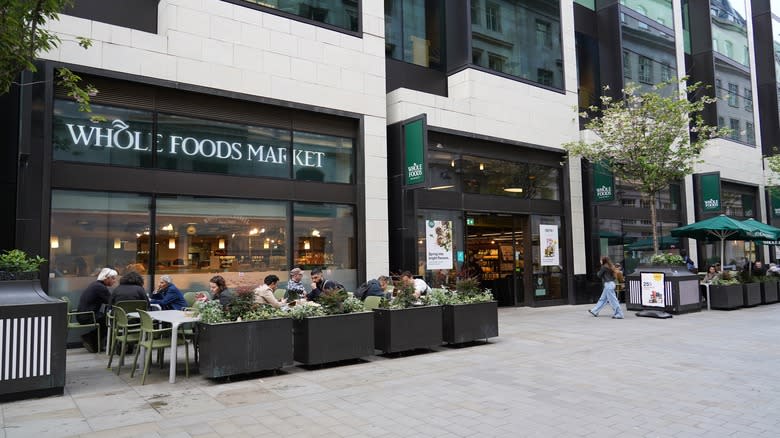

Whole Foods operates in the United States (where most of its stores are), Canada, and the United Kingdom. The company had been talking about expanding in the U.K. but with two of the seven U.K. stores now closed, it seems as though expansion is unlikely. This is a blow for a company that clearly has its sights set on going international in a bigger way.
Some people suggest that its poor sales on the other side of the pond might be because groceries are, on average, of a higher quality in the U.K. than the U.S. Faced with a good range of organic and specialty items in U.K. supermarkets, people don’t have much reason to shop at Whole Foods. That said, Whole Foods still claims that they want to open more locations in the U.K., so we’ll have to wait and see what happens.
Customers Are Complaining About Quality Going Downhill At Whole Foods


We’ve already covered the fact that Whole Foods is one of the more expensive grocery stores. For some people, though, this isn’t a problem — as long as they’re getting quality products that they love. It’s all about perspective. For some shoppers, it’s worth splurging on $6 pasta or a $10 stick of cultured butter, even if only now and again. However, in online discussions people are now complaining about the quality of the food and the offerings going downhill. It’s all very well paying more for something that’s truly excellent, but if buyers are disappointed, they’ll soon go elsewhere and Whole Foods could be in trouble.
For some people, it’s the quality of the produce that’s taken a nosedive. Customers complain about seeing more moldy or overripe fruit and veggies on the shelves. Others think the condition of the prepared food is now subpar. It certainly isn’t cheap, so buyers expect a certain level of quality that Whole Foods doesn’t seem to be meeting. Then, some people find that the selection of high-quality, specialist products has gotten worse, notably since Amazon took over. All this could be attributed to cost-cutting measures from the new bosses. It’s all well and good to try to make stores profitable, but if quality is suffering, it’s time to rethink. It could end with the company losing customers and possibly collapsing.
Read the original article on Mashed.
